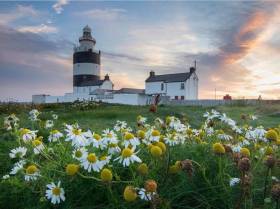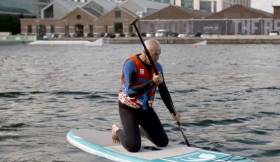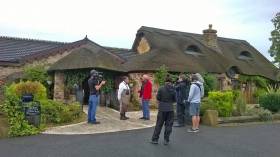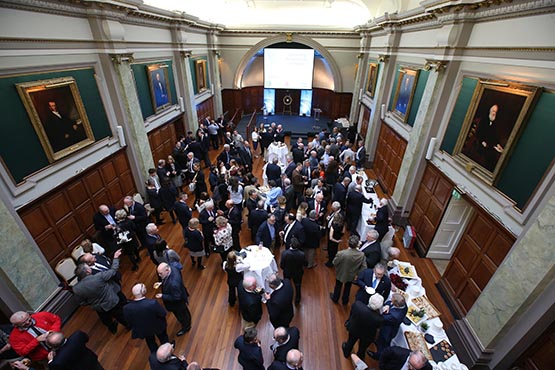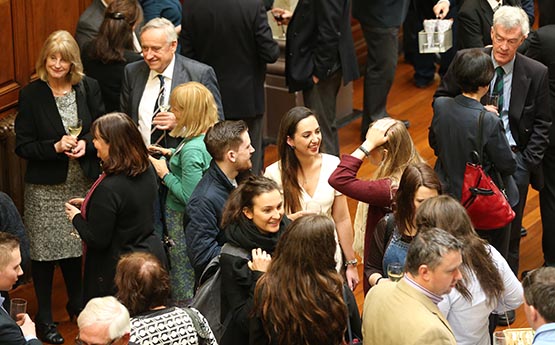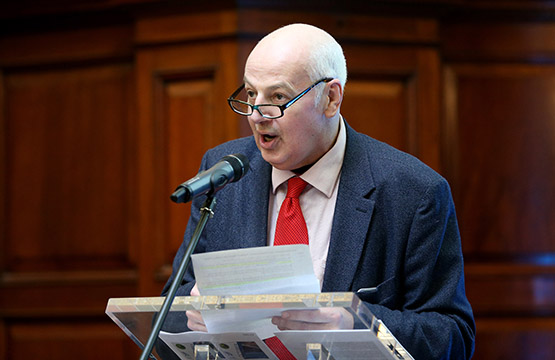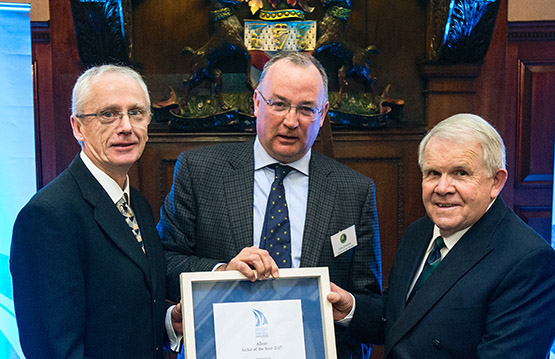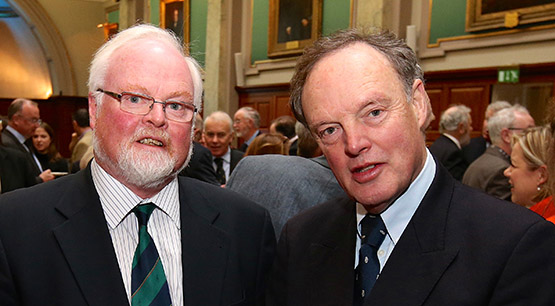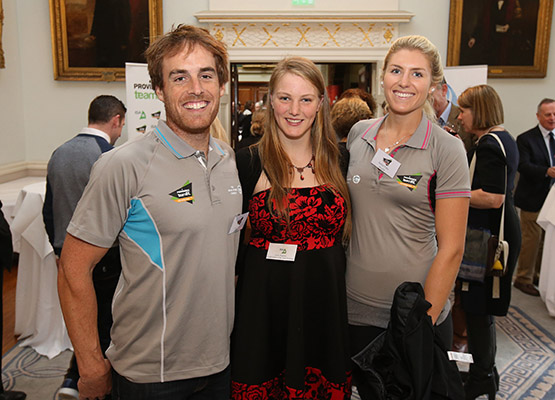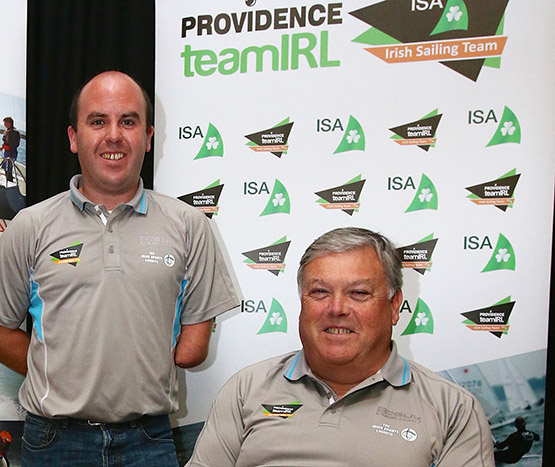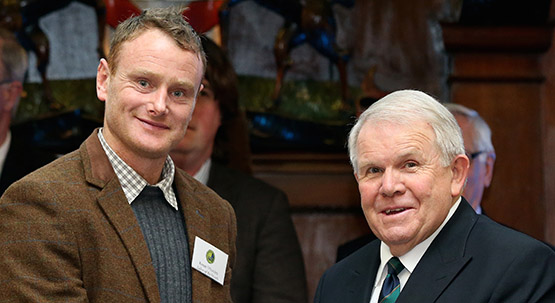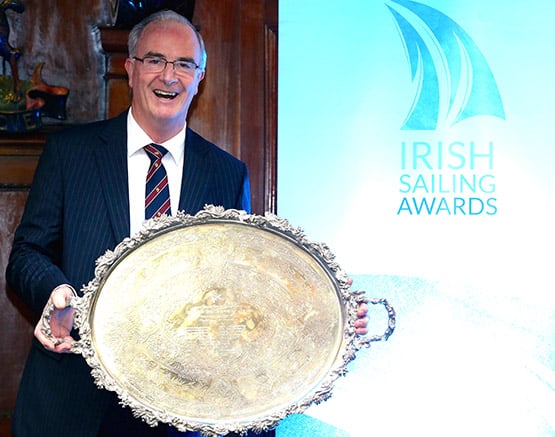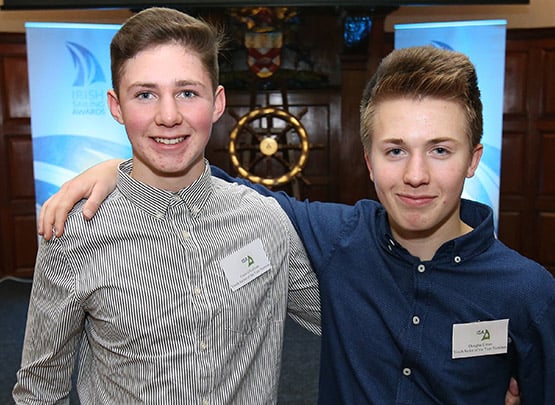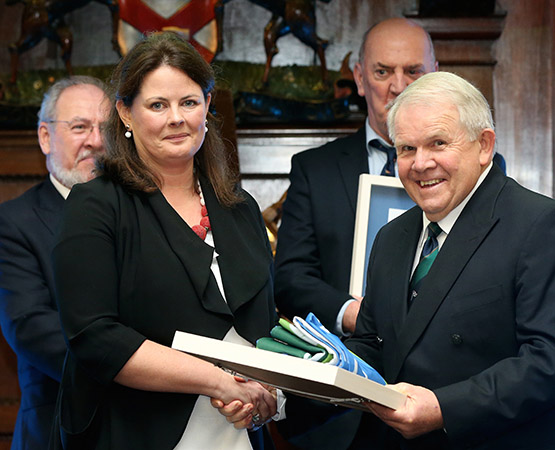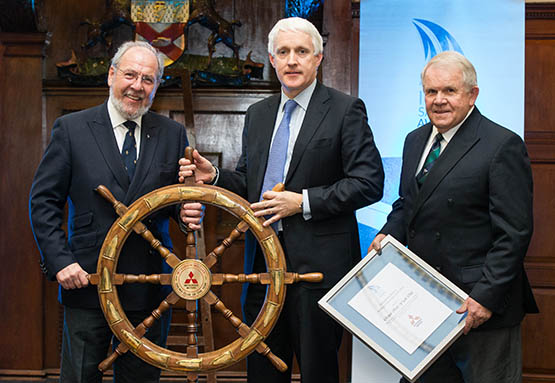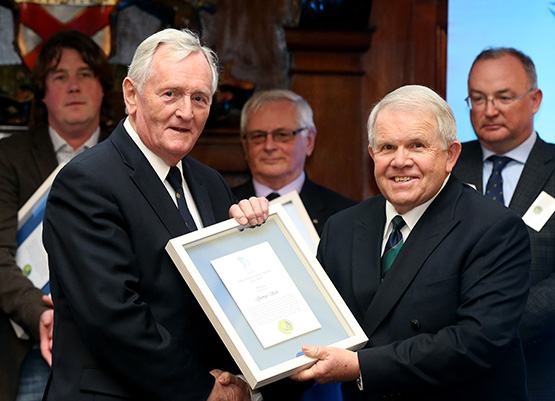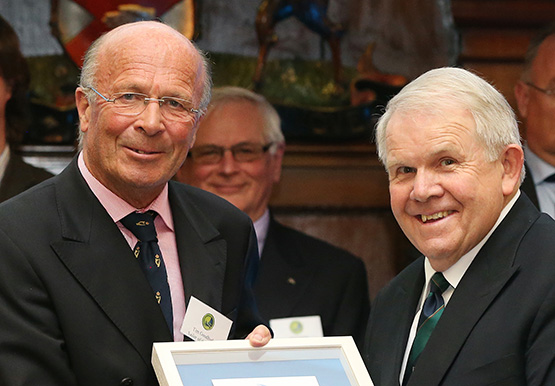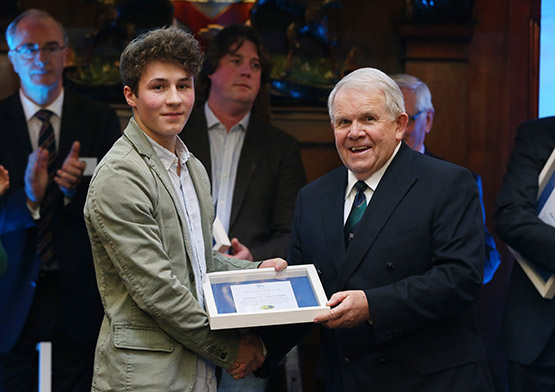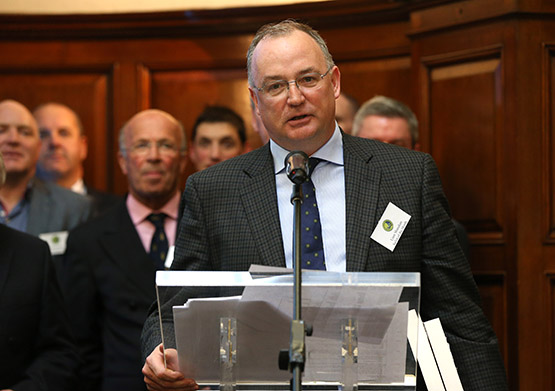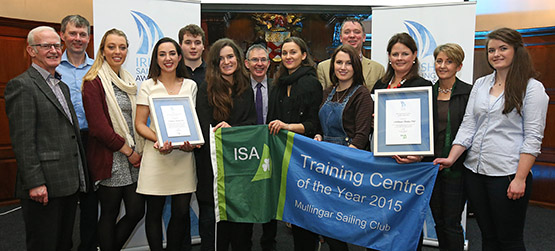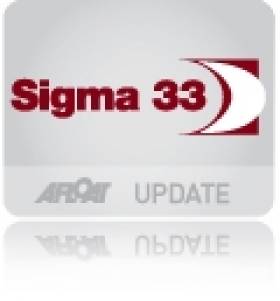Displaying items by tag: Bobby Kerr
Launch On May Bank Holiday Festival of 'Great Lighthouse, Great Fun' Photography Competition
#Lighthouses - To kick off summer, Great Lighthouses of Ireland invite you to the 'Shine a Light on Summer' Festival this May Bank Holiday weekend and to take part in a 'Great Lighthouse, Great Fun' photographic competition to capture the best of summer fun at one of their great lighthouses.
To get a glimpse of all the great summer fun you can have at the Great Lighthouses of Ireland, watch this short video.
Shine a Light on Summer Festival
Shine A Light on Summer Festival is taking place from top to toe on the island of Ireland at five of our Great Lighthouses – at Fanad Head in the wilds of Donegal, at Hook the world's oldest working lighthouse in Wexford, at the majestic Loop Head and on the islands of Rathlin in the north and Valentia in the south west.
Be blown away by what you'll see, experience and discover at each site over the weekend. Meet fascinating lighthouse Storykeepers. Enjoy their tales of maritime marvels and nature's wonder, of heroic feats and the lightkeeping life. Discover crafts and traditions of times past and learn about modern coastal technology too.
Find out more by visiting this link.
'Great Lighthouse, Great Fun' Photography Competition
As part of our Shine A Light On Summer Festival, we are launching our 'Great Lighthouse, Great Fun' photography competition.
We invite you to take a photograph that best captures and expresses summer fun at one of our Great Lighthouses of Ireland and enter it into our 'Great Lighthouse, Great Fun' photography competition.
The competition winner will enjoy a fantastic personal Great Lighthouses of Ireland experience for four people, including:
- A two-night stay at any of the Great Lighthouses of Ireland self-catering houses
- A personal tour with our leading 'storykeeper' at any of our lighthouse attractions
- A unique opportunity to meet the Irish Lights historian at Howth's Baily Lighthouse for a chance to see and learn all about the history and heritage of Irish Lights
- A chance to meet the Irish Lights team and learn more about how aids to navigation work today
This fantastic competition opens on Friday 4th May and closes on Wednesday 20th June 2018. To enter, simply post your photo on Instagram, Twitter or Facebook using the hashtag #GreatLighthouseGreatFun.
For full details and the competition terms and conditions, see this link :
Great Lighthouses of Ireland Chairperson, This , will announce the lucky winner during the Seafest www.seafest.ie on Saturday 30th June 2018.
Bobby Kerr’s Travels Along Home Shores Begin This Thursday
#OnTV - The first episode of Bobby Kerr-fronted UTV Ireland series Along Home Shores comes this Thursday 27 October at 7.30pm and explores Dublin’s waterways, with a visit to the famous wallabies of Lambay Island.
Afloat.ie reported last month on filming for the new eight-part-TV series, in which the Insomnia café entrepreneur and avid sailor will discover the hidden treasures of the coastlines and waterways of Ireland.
In each episode, Bobby will examine how people are using the natural resources of our waterways to create employment, while also showcasing the beauty of Ireland along the way. Over eight weeks, he will embrace the heart of maritime communities all over Ireland.
The first episode sees Bobby beginning his journey on his own doorstep of Dublin, where he goes for an early morning swim at the Forty Foot with members of the Sandycove Bathers Association.
At Grand Canal Dock, he meets a local leisure business and tries paddle boarding for the first time, and Bobby's fitness is put to the test when cancer support group, the Plurabelle Paddlers, bring him dragon boat training.
Eugene Garrihy, the owner of Dublin Bay Cruises, invites Bobby on board his boat to talk business, and he also gets an exclusive invite to the hidden gem of Lambay Island by businessman Michael Bermingham, who is the only supplier of Lambay meat in Ireland.
"I have been truly amazed by the scenic beauty of Ireland's coastline and inland waterways during my filming of Along Home Shores,” said Bobby of his experience making the series.
“The fascinating characters I met along the way were an absolute inspiration to me. Through the prisms of heritage, business and culture, I have now gained a unique insight into Ireland. The sheer magnificence of our coastal and inland waterways, and their people, cannot be overstated."
Beginning his voyage in the capital, Bobby will bring the personality of coastal towns, villages and inland waterways to life as he travels anticlockwise around Ireland before ending his journey back in Dublin.
Future weeks will see him visiting Rathlin Island's seabird colony, kayaking the Causeway Coast, angling on Lough Erne, sailing on Lough Derg, attending the homecoming of Skibbereen's Olympic heroes, cycling the Deise Greenway, going oyster farming, staying overnight in a lighthouse and lots more.
The first episode of Along Home Shores airs this Thursday 27 October at 7.30pm on UTV Ireland.
New TV Series To Highlight Lives On Ireland's Waters
#OnTV - Filming has commenced for the new UTV Ireland programme Along Home Shores.
The eight-part TV series is focusing on the waterways of Ireland, with each show examining inland, coastal and offshore lives in a different region of the country.
Taking the helm is Newstalk presenter Bobby Kerr, best known for his coffee chain Insomnia and his role as an investor on Dragon's Den.
As he travels the country, Kerr is meeting locals and businesses who live, play and work on the waterways.
So far the crew have made their way along the Lower Bann, the Grand Canal, Lough Erne and more recently along the Shannon, stopping in Carrick-on-Shannon and Lough Key Forest Park in Boyle.
The eight-part series will air Monday nights on UTV Ireland later this autumn.
Irish Sailing Celebrates the Best of the Best
The Irish Sailing Association Annual Awards ceremony undoubtedly conveyed three clearcut messages. The first is that, in global sailing terms, we’re a wet and breezy little island which nevertheless punches way above our weight. The second is that we live comfortably with a long and very distinguished history of recreational sailing which puts most other nations in the shade. And the third is that Ireland is definitely not the greatest place in the world to be a professional sailor. W M Nixon takes a look back at Thursday’s annual prizefest.
Those unfamiliar with the Royal College of Surgeons in Ireland might think it odd that, in just two short years, its splendid College Hall, at the very epicentre of Dublin on Stephens Green, has come to be seen as the most natural focal point for the annual honouring of our top sailors and clubs.
The College Hall in the RCSI provides an ideal setting for the annual gathering for Irish sailing’s national awards.
Sailors talking about sailing. The Awards Ceremony provides a cherished opportunity for sailors from every discipline to shoot the breeze together.
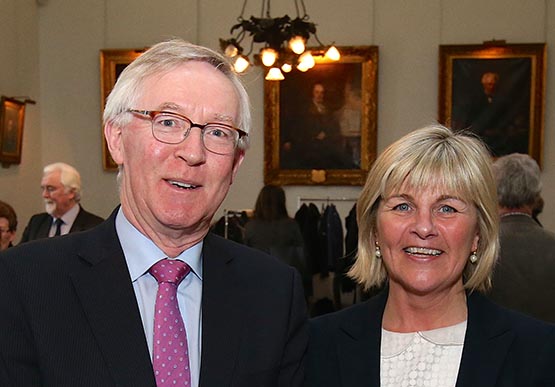
Dragons Den star Bobby Kerr – a sailing man himself – was the lively Master of Ceremonies
But in terms of being a setting which lends itself very positively to such a gathering, College Hall is right on target. It’s a splendid room which is confident with itself without being over the top. It comfortably accommodates the crowd of between 180 and 200 who have come from all over Ireland to celebrate what’s best in our sailing. And as if that weren’t enough, the RCSI has remarkable links with sailing going back more than a hundred years.
John Treacy, CEO of the Sports Council, with Liam Shanahan and ISA President David Lovegrove
So after last year’s first use of the venue, which stemmed from a typically far-sighted suggestion by ISA Board Member Brian Craig, people were keen to go back. And it wasn’t because no-one could think of anywhere better. On the contrary, it was because we’d found that the College of Surgeons is one of those wonderful buildings which make you feel better just from being in it. So in the early days of Spring when we wonder if summer is really going to come at all, a bit of a party in the College of Surgeons is just what the doctor ordered. And as for those doctors and surgeons from the RCSI going sailing, we’ll return to that at the end of this piece. But what of the event itself?
Well, with the Afloat.ie Sailor of the Year award going to a determinedly Corinthian skipper who cheerfully admitted that there’s any amount of professional sailors out there who could probably beat the pants off him, but nevertheless his core interest is offshore racing with family and friends, and if they win within those self-imposed limitations, then so much the better…..There it was, the real voice of Irish sailing, and no mistake.
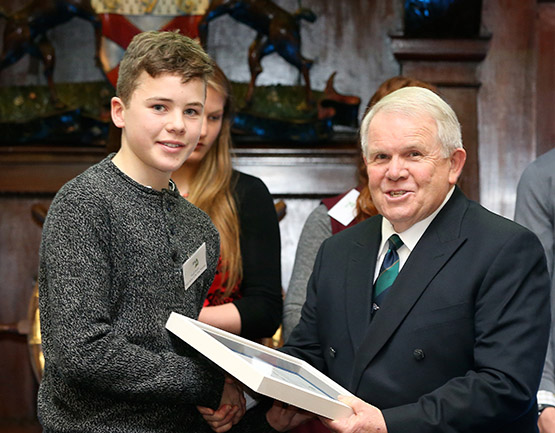
Pierce Purcell of Galway Bay SC with the RIYC’s Michael Boyd, Commodore of the Royal Ocean Racing Club
But what about the clubs through which we go sailing? How can they carry such a wealth of history, and yet be of any contemporary relevance? Here again, the evidence speaks for itself. The new Mitsubishi Motors Sailing Club of the Year has a wonderful history going back to 1831, yet in terms of sailing achievement and voluntary input into the local, regional and national organisation of sailing, it is making a fantastic contribution. And as for its relevance to sailing in the future, independently of the Club of the Year adjudication taking place, this same club was comfortably on its way to being the top ISA Training Establishment in its region, and on the shortlist for the national title too.
Olympian and rising stars – James Espey, Aoife Hopkins and Saskia Tidey
If that’s not an illustration of the way that Irish sailing honours its past while living in the present and looking to the future, then I don’t know what it is. But what’s this third point about Ireland being a cold place for professional sailing? Here again, the assembly in the RCSI was very representative of our Irish sailing population. For sure, there are some very distinguished Irish professional sailors, and there are certainly Irish owners who are prepared to pay the top talents to sail with them. But there’s something about the Irish sailing scene which is inimical to such a setup at home. By all means do it where the weather’s usually benign, and there’s lots of money floating around. But in the Irish climate you sometimes have to be so keen to go sailing despite hostile weather that you just have to rely on nutty amateur crew - the professionals know there’s much better and more reliable pickings elsewhere.
Thus we’ve come to the ironic situation that our top home-based professional sailors are actually our Olympic hopefuls. It’s extraordinary when you think that the modern Olympics were “re-founded” in 1896 in order to celebrate amateur sport, yet now in Ireland just about the only home-based sailors who can be said to be professional are the Olympic aspirants. And if they haven’t accepted that they need a professional approach, then they’re not really at the races at all.
Thus although the friendly Olympian presence of Annalise Murphy, James Espey and Saskia Tidey was much to be welcomed in the very representative throng, generally anyone who was there with any sort of a professional interest in sailing had it as part of a larger business in which actually going sailing is only a small part of the total setup.
Paralympic sailors Ian Costello and John Twomey
Admittedly we did have one Olympian who received an award, John Twomey who took the title in December for his qualification for the Paralympics in September 2016. And he came with added laurels, as on the very day of the ceremony, it had been announced that he and his crew of Ian Costello and Austin O’Carroll had moved up to fifth in the World Rankings. But if you suggested to John Twomey – headed for his 11th Olympiad – that he’s a professional sailor, he’d be convulsed in mirth. Real life is related to an accountancy practice in Kinsale.
So the only other monthly awardee who could remotely be said to be a professional sailor was August winner Ronan O Siochru. who skippered the winning Irish Offshore Sailing boat Desert Star to victory in the 33-strong Sailing Schools Division in the Rolex Fastnet Race 2015. But he’s very definitely running a business - and a very demanding one at that – in which going sailing is only part of it.
Ronan O Siochru with the President
Thus what Thursday’s ceremony was all about was voluntarism and amateur sport, and in case anybody missed the point, it was supposed to be a bit of fun. In this spirit, the greatest trophy in Irish sailing, the might salver for the Helmsman’s Championship, was given an outing. The All Ireland Helmsman’s Championship being an amateurs-only affair, as it is held over an October weekend, inevitably by the time its award ceremony for the salver is shaping up it’s well into Sunday evening. It’s getting dark, and everyone’s tired and wants to go home. So inevitably the handing-over of the historic trophy is a downbeat and somewhat rushed affair.
But as the ISA Annual Awards ceremony is all about handing over prizes with as much ceremony as possible, it was arranged for the salver – which had been hurriedly handed over to successful defender Anthony O’Leary in Dun Laoghaire back in October – to be smuggled out of the O’Leary household down in Crosshaven, secretly taken to Dublin, hidden away in the College of Surgeons, and then formally presented as a surprise extra to the great man after he’d received his Sailor of the Month award for April. He blushed.
Got him! Sailor of the Year 2014 Anthony O’Leary unavoidably missed last year’s awards ceremony, and then in 2015, although though he was Sailor of the Month for April, there were very few people around in October when he successfully defended the Helmsmans Championship Salver. So it was taken secretly to this week’s ceremony, where more than 180 people cheered him to the rafters.
ISA Youth Champions 2015 are Colin O’Sullivan and Doug Elmes, Bronze Medallists in the 420 Worlds.
Before all this, we’d been setting the scene with the ISA Youth Sailors of the Year, who were 420 Worlds Bronze Medallists Douglas Elmes and Colin O’Sullivan, and the ISA Training Centre of the Year, which was Mullingar Sailing Club from Westmeath which headed the Western Region, and overall came in ahead of Foynes YC from the Southern Region and the Royal Irish YC from the Eastern Region.
Katie Johnston of Mullingar Sailing Club with David Lovegrove when MSC was announced as ISA Training Centre 2015.
The new Mitsubishi Motors Sailing Club of the Year is the Royal Irish YC – Commodore James Horan with Billy Riordan of Mitsubishi Motors and David Lovegrove.
But for the RIYC Commodore James Horan, the good news was only beginning, as his club was then announced as the new Mitsubishi Motors Sailing Club of the Year for a host of excellent reasons. We’ll list them in more detail here on Afloat.ie in due course when the traditional handing-over ceremony for the old ship’s wheel trophy is held in the RIYC clubhouse later in the Spring. But meanwhile on Thursday we saw ample reason for it, as two of the Sailor of the Month awards went to very active RIYC members, George Sisk and Tim Goodbody.
July Sailor of the Month George Sisk with the ISA President
Dun Laoghaire Regatta Week 2015 Chairman, Fastnet Race 1987 overall winner, and multiple champion Tim Goodbody was Sailor of the Month in November
Youngest cruising award winner was Fergus Ogden, who in June and July sailed round Ireland with his brother in an open Drascombe Lugger.
Then came the Sailor of the Year announcement. Anyone who was following the voting in the Afloat.ie poll will know it was running very close. But as the poll results are only a quarter of the adjudication process, it was just a couple of days ahead of the awards ceremony when the judges finally made their decision. They came down in favour of Liam Shanahan both for his wonderful and very sporting victory in the Dun Laoghaire to Dingle Race with his family’s J/109 Ruth, and his subsequent success in retaining the Irish Sea Annual Championship title.
His modest acceptance speech was, in effect, a manifesto on behalf of all Irish amateur sailors, and particularly family sailors. The Shanahans are one remarkable sailing tribe right through three generations. And as for that win in the Dun Laoghaire to Dingle Race – well, it was beautiful sailing. Some sailing races are won by brutal slugging. Some are won by sheer cunning. Some inshore races are even won by dirty sailing, and it’s within the rules even if it does the image of our sport no good at all. But some race wins are simply beautiful sailing. And Ruth’s success in Dingle was definitely in that category.
After receiving his award, Liam Shanahan briefly but eloquently outlines his philosophy of sailing
So the ceremony on Thursday concluded with this celebration of the best in Irish sailing, and it chimed well with the mood of the moment and the location, as the current President of the RCSI is Declan Magee who sails from Dun Laoghaire, and he was most welcome at the party and naturally thanked for the use of the hall……
Then as we exited the College Hall, the first doorway we passed was the Sir Thomas Myles Room. He was RCSI President 1900-1902, a wonderful surgeon and a man of prodigious energy who boxed to championship level, and adored sailing. A Home Ruler of Limerick origins. he made his auxiliary ketch Chotah available to take the guns off Conor O’Brien’s Kelpie during the Asgard gun-running of 1914, and landed them in Kilcoole in County Wicklow. And though he was immediately made a Colonel and head of British army surgical services in Ireland on the outbreak of the Great War of 1914-18, he also saw to it that hidden rooms in the major Dublin hospitals under his control were available to treat wounded rebels, indeed anyone who was wounded, during the Rising of 1916.
Builders of the future – the team from Mullingar Sailing Club, ISA Training centre 2015
More recently, a leading sailing figure with links to sailing is Michael O’Rahilly who, when he became a student at RCSI at the end of the 2950s, found that the RCSI Sailing Club consisted of just one neglected Firefly dinghy. By the time he graduated in 1963, he was Club Captain, RCSISC had three Fireflies in top racing condition, and they were the Irish university champions.
Subsequently he went in to play a leading role in Dublin Bay SC, and was the Commodore for the DBSC Centenary in 1984. He follows in a notable RCSI tradition of sailing and working voluntarily for our sport, as an earlier top sailor in the college had been Jimmy Mooney who played a key role in the development of Irish dinghy sailing, and then went on to be our top Dragon sailor for many years, winning the Edinburgh Cup and representing Ireland in the Olympics.
Before Jimmy Mooney another noted character in the RCSI sailing scene was Rory O’Hanlon, who became a noted figure in offshore racing – he won a cup in the 1971 Fastnet Race – and was further renowned for his long distance cruising exploits.
He was noted as a kindly mentor to young cruising hopefuls, gently giving encouragement which could make all the difference to a nervous skipper. One such beginner, who later went on to great achievements, nervously went to Rory O’Hanlon to ask how best he should approach his first major voyage, north towards the Arctic in a little 26-footer.
“Sure, you just keep on sailing, and you’ll get there” said Rory. “Just keep on sailing, that’s all there is to it”. Just keep on sailing. It’s sensible advice. It resonated round College Hall in the RCSI on Thursday afternoon. We should all heed it.
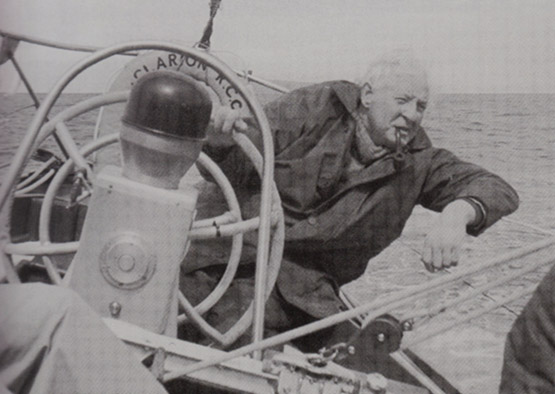
“Just keep on sailing, and you’ll get there”. The late Rory O’Hanlon at the helm of his S & S 43 Clarion with which he won the Philip Whitehead Cup in the 1971 Fastnet Race, and also cruised on long voyages. While a student at the Royal College of Surgeons in Ireland, he was active in the sailing club.
See also: Sailing Awards slideshow
#rdilr – The 2014 Round Ireland Yacht Race is heating up with the announcement that seasoned sailor and former Dragon Bobby Kerr is hoping to be part of the winning crew in one of the most gruelling and challenging yacht racing competitions in the world... and a Wicklow farmer is not impressed!
Kerr is joining a crew of 18 in a 60ft yacht to compete with 34 other boats from Ireland and abroad in the 5 day race, which departs Wicklow Bay on Saturday, 28th June.
The first yacht over the line is typically one of the bigger boats (60 ft and over) sailed by experienced crews. Bobby's Boat – the Newstalk for Adrenalin is 60ft in size, and is in the running.
However a crew of amateurs from Wicklow, led by local farmer David Ryan have declared war on the Dragon!
48 year old David has gathered together what he describes as 'a passionate crew' of 18 people aged between 18 and 57 and convinced the owner of the 70ft Monster Project, a Volvo 70, to provide the yacht to enter the race in the hope of fulfilling his lifelong dream of being the first yacht to cross the line in the biennial Round Ireland.
He is determined that Kerr and his crew will not destroy their dream, insisting that all the coffee in the world wouldn't get the Insomnia boss over the line before them.
"The Monster will devour the Dragon. They may have an expert crew but we're coming from the heart – there will be massive hardship, sleep deprivation; we'll likely get soaking wet and the physical strain will be immense. It doesn't matter when you're chasing a dream... we will win!"
"Bobby will miss his creature comforts and will be pining for his coffee every morning. Our willpower will knock them out of the water."
Kerr remains undaunted by Farmer Ryan's challenge, saying he does like his Americanos but has every intention of smuggling a small Espresso maker on board, despite weight restrictions.
"David's boat may be the first over the line – it's the biggest boat in the race so it would be a pretty bad reflection on the crew if they didn't make it over first. We are the better crew and the actual winner is not the first over the line but based on handicap; we're pretty confident our experienced crew will beat the Monster in real terms!"
"I may not be the best sailor, but I'm certainly not the worst. I've competed in, and won races before, and sleep deprivation is not a problem for me. I have often worked 24 hours straight – you draw on your inner resources. If you programme yourself, knowing you'll get little or no sleep for four or five days and then it's over, you can do it. Farmer Ryan hasn't a hope!"
The Round Ireland Yacht Race is now in its 36th year (18th sailing of the biennial race) and is Ireland's premier offshore sailing race attracting entrants from across Europe and as far afield as Russia, the USA and New Zealand. It will depart Wicklow on Saturday, 28th June 2014 at 2.00 pm.
It is the only RORC race based in Ireland and regarded as equivalent in terms of rating points to the Fastnet Race, the classic offshore race, which runs in alternate years to the Round Ireland.
Internationally, completing the race, is considered a significant feat as the race is one of the most gruelling and challenging sailing competitions in the yacht racing calendar.
The course, starting and finishing in Wicklow, brings entrants through widely different sea types and coastlines, from the Atlantic Ocean to the more sheltered Irish Sea, with difficult tidal gates, particularly around the North Eastern coast and navigational challenges requiring day and night tactical decisions at every change of forecast.
The fifth 'Nora Barnacle Challenge' Sets Sail this Friday
The fifth "Nora Barnacle Challenge" takes place this year on Friday 20th August 2010 at 4p.m. in Dublin Bay. The event is a charity yacht race sailed in 11 Sigma 33 boats. The purpose of the race is to raise funds for the Blackrock Hospice. The event is run by 3 Sigma 33 sailors, Bobby Kerr, Paul McCarthy and Maurice Byrne - in association with their local pub "Fitzgerald's of Sandycove". The idea is to provide an opportunity to non-sailors to participate in a short race from Dun Laoghaire to Dalkey and back with the assistance of two experienced sailors.
This year it is expected that there will be over 100 participants sailing on the water. All the proceeds raised for the event are donated to the Blackrock Hospice charity to provide funding for much needed equipment. This event brings together the Sigma 33 sailors in Dun Laoghaire , the traders of Sandycove and Glasthule and the 100 plus participants who together provide the sponsorship and donations for this deserving charity.
This is the fifth year of the event and it is hoped that by Friday evening the group will have raised €75,000 since 2006 for the Hospice through donations and sponsorship raised by participants.
The Nora Barnacle challenge started in 2006 when three local sigma 33 sailors were challenged by the local cliental of Fitzgerald's pub in Sandycove, to settle a score "who was the best sigma sailor in the establishment". The challenge was accepted and the event was organised by the three sailors, Bobby Kerr of "Leeuwin", Paul McCarthy of "White Mischief" and Maurice Byrne of "Miss Behavin". To ensure fair play and that no one boat would have a competitive advantage the rules of the event stated that five members of the crew of each boat would be made up from people with no sailing experience, along with two experienced sailors and that the race would be used as an opportunity to raise sponsorship in aid of the designated charity, the Blackrock Hospice.
In keeping with tradition, all participants, spectators and supporters will retire to Fitzgerald's pub in Sandycove for refreshments and the official prize giving of "The Nora Barnacle Cup" presented by Tom Fitzgerald followed by the annual auction to raise additional funds. The official " Nora Barnacle Challenge" T-Shirt will also be on sale.


























